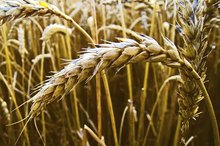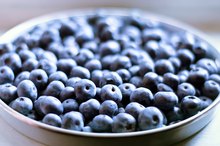What Causes Foamy Diarrhea?
Introduction
Foamy diarrhea can indicate a host of illnesses and diseases, but is most commonly associated with celiac disease 1. Celiac disease is an autoimmune digestive disease in which the body attacks itself every time gluten is consumed, damaging the absorptive surface or "villi" of the small intestine 1. This makes the body unable to absorb nutrients from food, which can lead to malnourishment. In celiac disease, foamy diarrhea is often accompanied by bloating, gas and sometimes nausea 1.
Celiac Disease: Diagnosis and Treatment
Celiac disease is an inherited intolerance for gluten, a protein found in wheat, barley and rye 1. The disease can be difficult to diagnose; according to the National Foundation for Celiac Awareness, three million Americans suffer from the disease, but only about five percent are accurately diagnosed 12. Many celiac disease sufferers initially receive a diagnosis of irritable bowel syndrome (IBS) 1. Diagnosing celiac disease requires a blood test and a biopsy 1.
The only way to treat celiac disease is to completely avoid gluten 1. This can be difficult because of the protein's presence in grains that have long been associated with a basic food group. Indeed, grains with gluten are found in everything from bread and cereals to pastas, processed meats, even Communion wafers. Dietary guidelines have been developed for the Gluten Intolerance Group and Celiac Disease Foundation and are in agreement with guidelines published by the published by the American Dietetic Association 12.
Other Causes
Does Wheat Cause Bloating?
Learn More
Foamy diarrhea also could indicate various other maladies, including IBS, parasitic infections and gall bladder disease. If gall bladder disease is the problem, the foamy diarrhea is often yellow or green in color and can burn coming out of the anus. This is caused by bile acid. Gall bladder disease is often accompanied by a sharp pain in the upper abdomen, generally on the right side, and can be diagnosed through a HIDA scan.
If you suffer from foamy diarrhea for more than one or two days, see a doctor immediately. In addition to being a symptom of celiac disease or other digestive illnesses, foamy diarrhea can lead to dehydration 1.
- Foamy diarrhea also could indicate various other maladies, including IBS, parasitic infections and gall bladder disease.
- Gall bladder disease is often accompanied by a sharp pain in the upper abdomen, generally on the right side, and can be diagnosed through a HIDA scan.
Related Articles
References
- Celiac.com
- National Foundation for Celiac Awareness
- Kelly CP, Bai JC, Liu E, Leffler DA. Advances in diagnosis and management of celiac disease. Gastroenterology. 2015;148(6):1175-86. doi:10.1053/j.gastro.2015.01.044
- Freeman HJ. Hepatobiliary and pancreatic disorders in celiac disease. World J Gastroenterol. 2006;12(10):1503-8. doi:10.3748/wjg.v12.i10.1503
- Jelsness-jørgensen LP, Bernklev T, Lundin KEA. Fatigue as an Extra-Intestinal Manifestation of Celiac Disease: A Systematic Review. Nutrients. 2018;10(11). doi:10.3390/nu10111652
- Yelland GW. Gluten-induced cognitive impairment ("brain fog") in coeliac disease. J Gastroenterol Hepatol. 2017;32 Suppl 1:90-93. doi:10.1111/jgh.13706
- Gabrielli M, Cremonini F, Fiore G, et al. Association between migraine and Celiac disease: results from a preliminary case-control and therapeutic study. Am J Gastroenterol. 2003;98(3):625-9.
- Jackson JR, Eaton WW, Cascella NG, Fasano A, Kelly DL. Neurologic and psychiatric manifestations of celiac disease and gluten sensitivity. Psychiatr Q. 2012;83(1):91-102. doi:10.1007/s11126-011-9186-y
- Hadjivassiliou M, Sanders DS, Woodroofe N, Williamson C, Grünewald RA. Gluten ataxia. Cerebellum. 2008;7(3):494-8. doi:10.1007/s12311-008-0052-x
- Weinstock LB, Walters AS, Mullin GE, Duntley SP. Celiac disease is associated with restless legs syndrome. Dig Dis Sci. 2010;55(6):1667-73. doi:10.1007/s10620-009-0943-9
- Kárpáti S. Dermatitis herpetiformis. Clin Dermatol. 2012;30(1):56-9. doi:10.1016/j.clindermatol.2011.03.010
- Zanchetta MB, Longobardi V, Bai JC. Bone and Celiac Disease. Curr Osteoporos Rep. 2016;14(2):43-8. doi:10.1007/s11914-016-0304-5
- Condò R, Costacurta M, Maturo P, Docimo R. The dental age in the child with coeliac disease. Eur J Paediatr Dent. 2011;12(3):184-8.
- Sedghizadeh PP, Shuler CF, Allen CM, Beck FM, Kalmar JR. Celiac disease and recurrent aphthous stomatitis: a report and review of the literature. Oral Surg Oral Med Oral Pathol Oral Radiol Endod. 2002;94(4):474-8.
- Spinell T, Demayo F, Cato M, et al. The association between coeliac disease and periodontitis: Results from NHANES 2009-2012. J Clin Periodontol. 2018;45(3):303-310. doi:10.1111/jcpe.12856
- Celiac Disease Foundation. Celiac Disease in Children.
- Catassi C, Fabiani E, Corrao G, et al. Risk of non-Hodgkin lymphoma in celiac disease. JAMA. 2002;287(11):1413-9. doi:10.1001/jama.287.11.1413
- Ghiselli A, Bizzarri B, Gaiani F, et al. Growth changes after gluteen free diet in pediatric celiac patients: a literature-review. Acta Biomed. 2018;89(9-S):5-10. doi:10.23750/abm.v89i9-S.7871
- Virili C et al. Atypical celiac disease as cause of increased need for thyroxine: a systematic study. J Clin Endocrinol Metab. January 11, 2012 [Epub ahead of print]. doi:10.1210/jc.2011-1851
- Freeman HJ. Reproductive changes associated with celiac disease. World J Gastroenterol. 2010;16(46):5810-4. doi:10.3748/wjg.v16.i46.5810
- Celiac Disease Foundation. Symptoms of Celiac Disease.
- National Institute of Diabetes and Digestive and Kidney Diseases. Symptoms and Causes of Celiac Disease.
Writer Bio
Thomas K. Arnold is publisher and editorial director of "Home Media Magazine" and a regular contributor to "Variety." He is a former editorial writer for U-T San Diego. He also has written for "San Diego Magazine," "USA Today" and the Copley News Service. Arnold attended San Diego State University.









